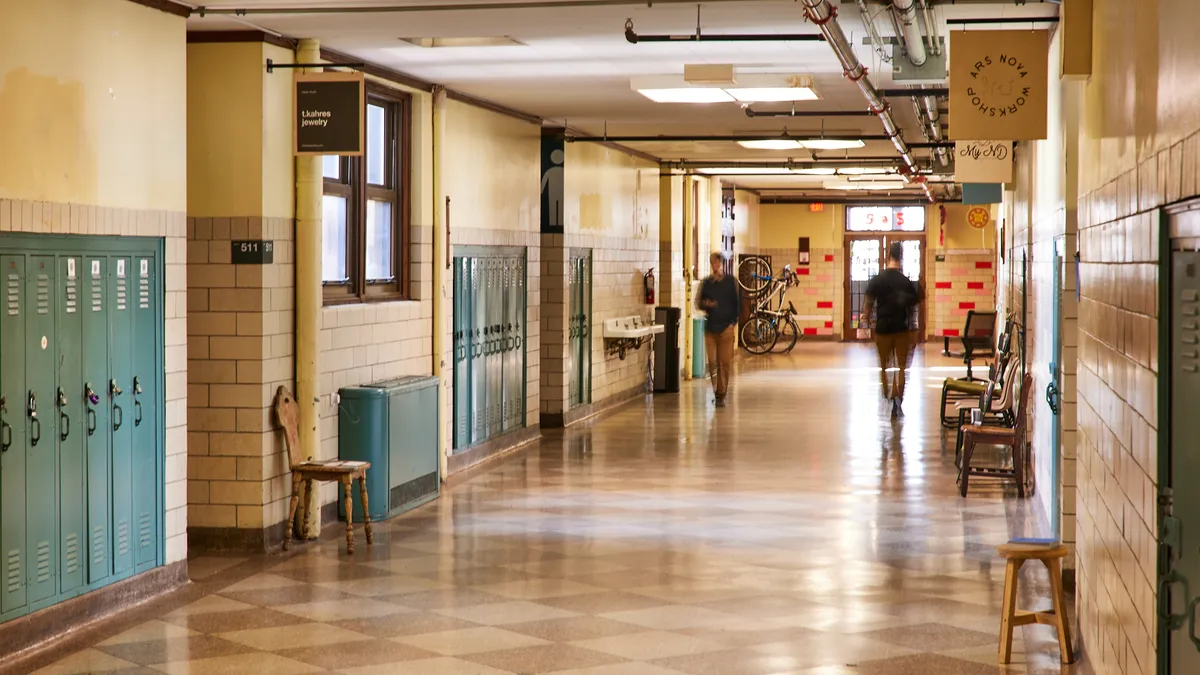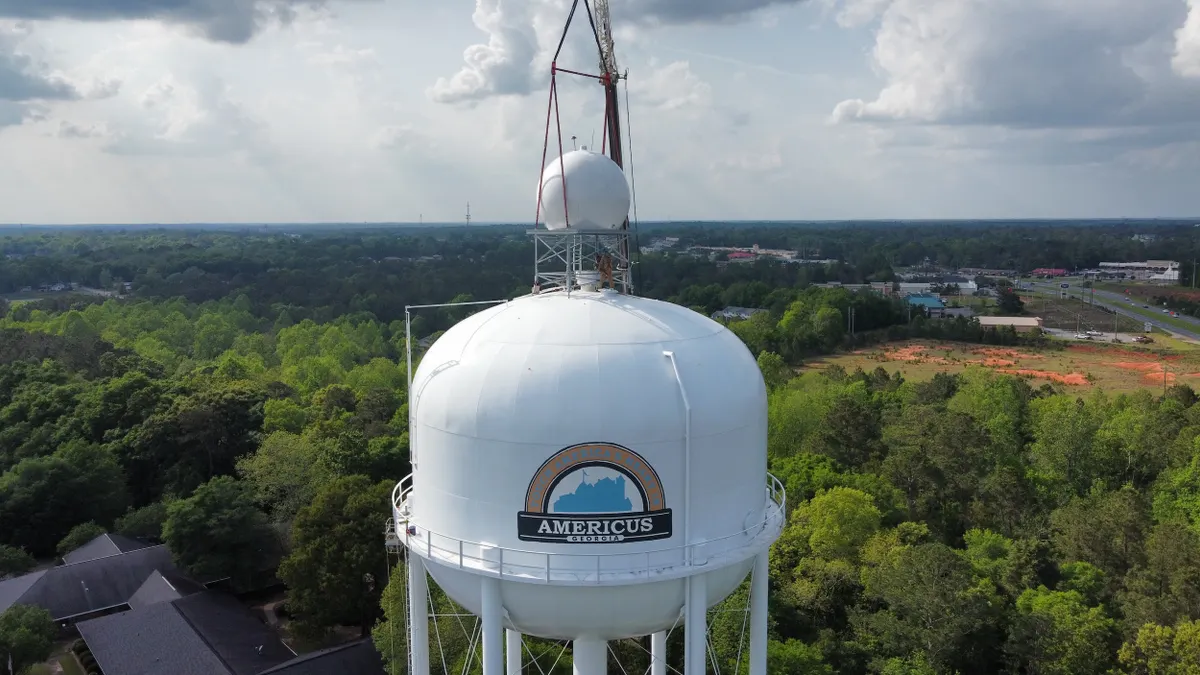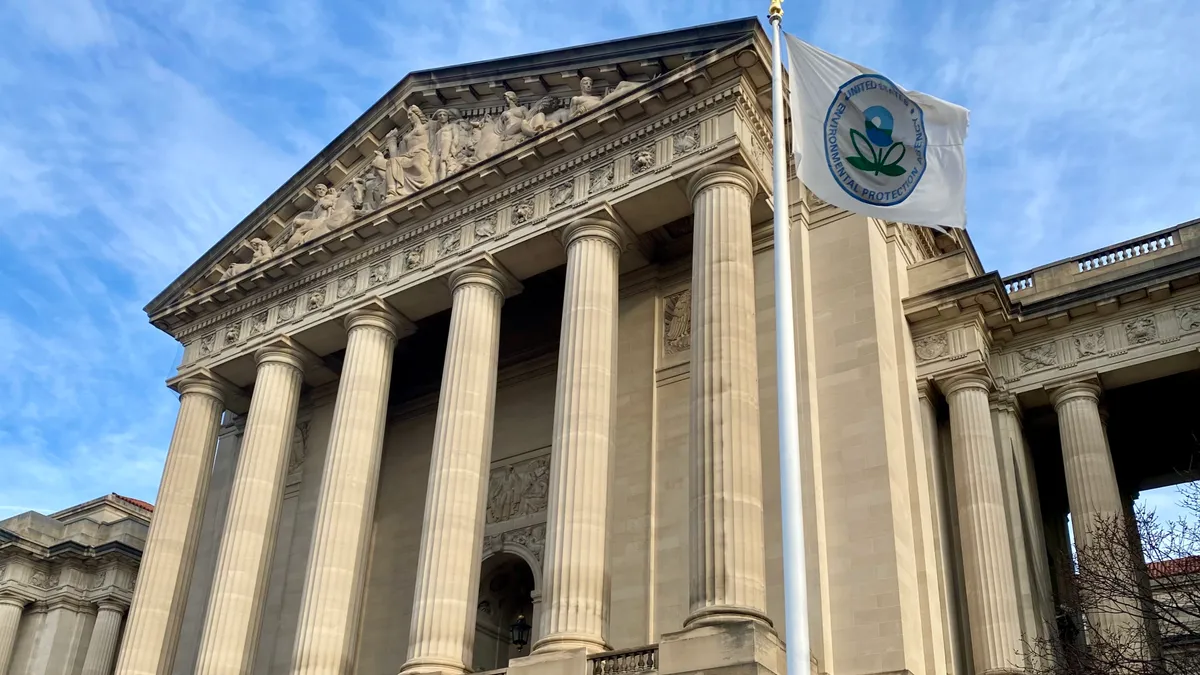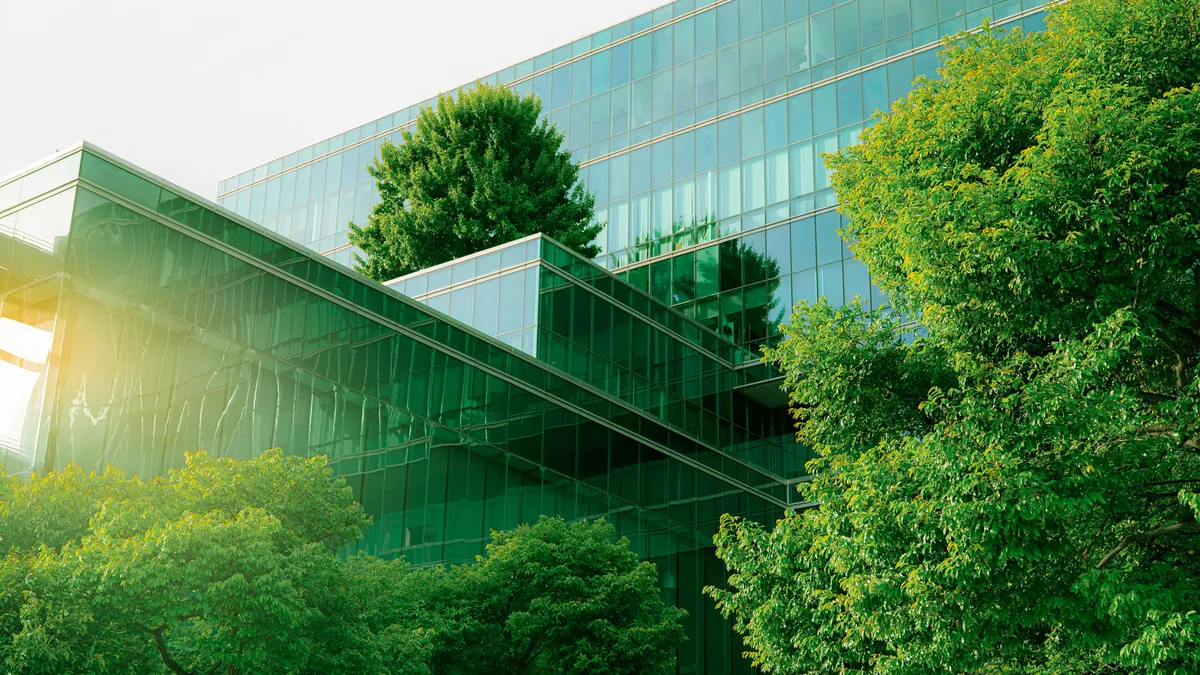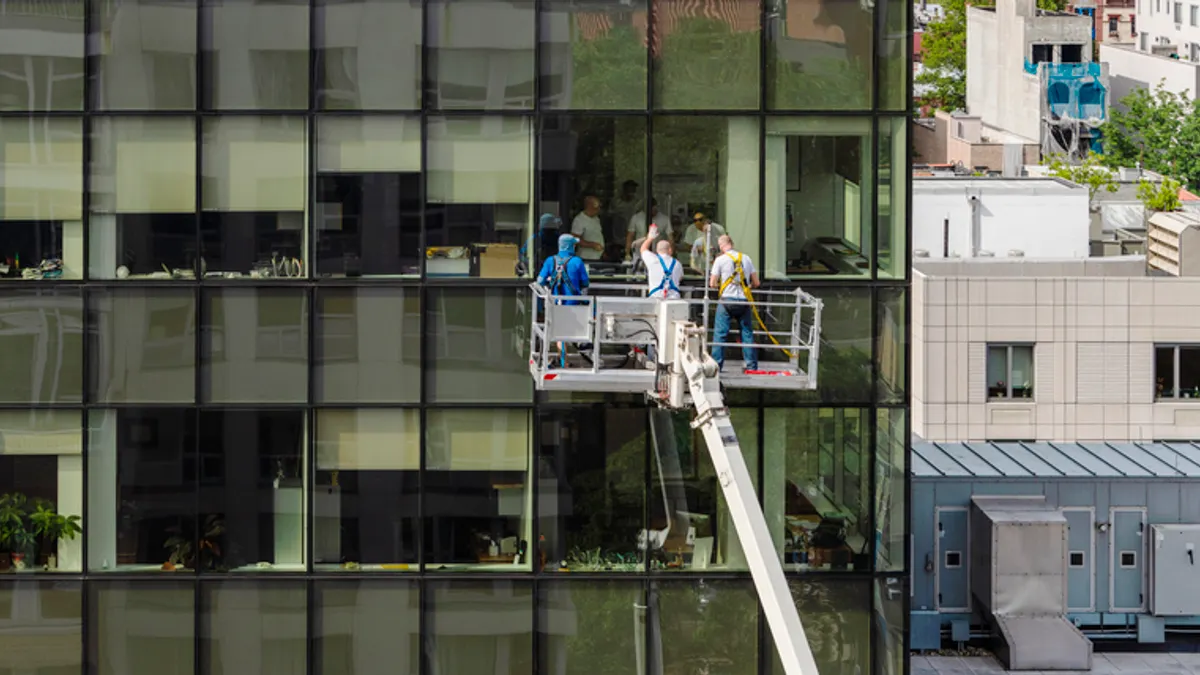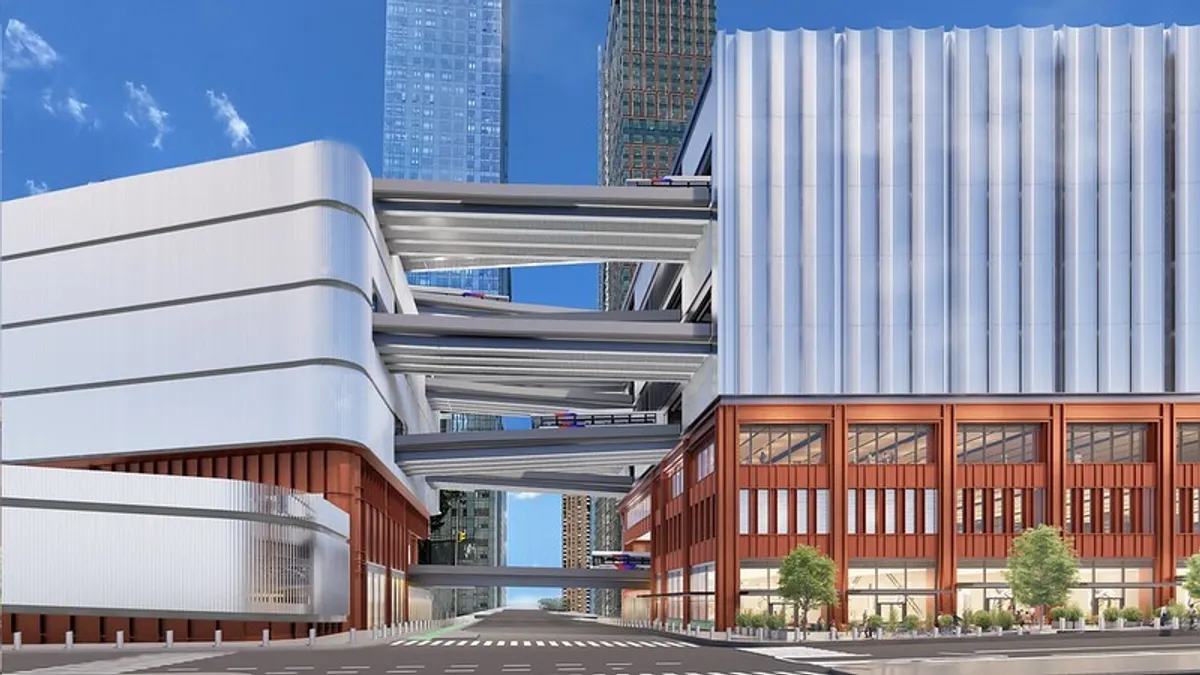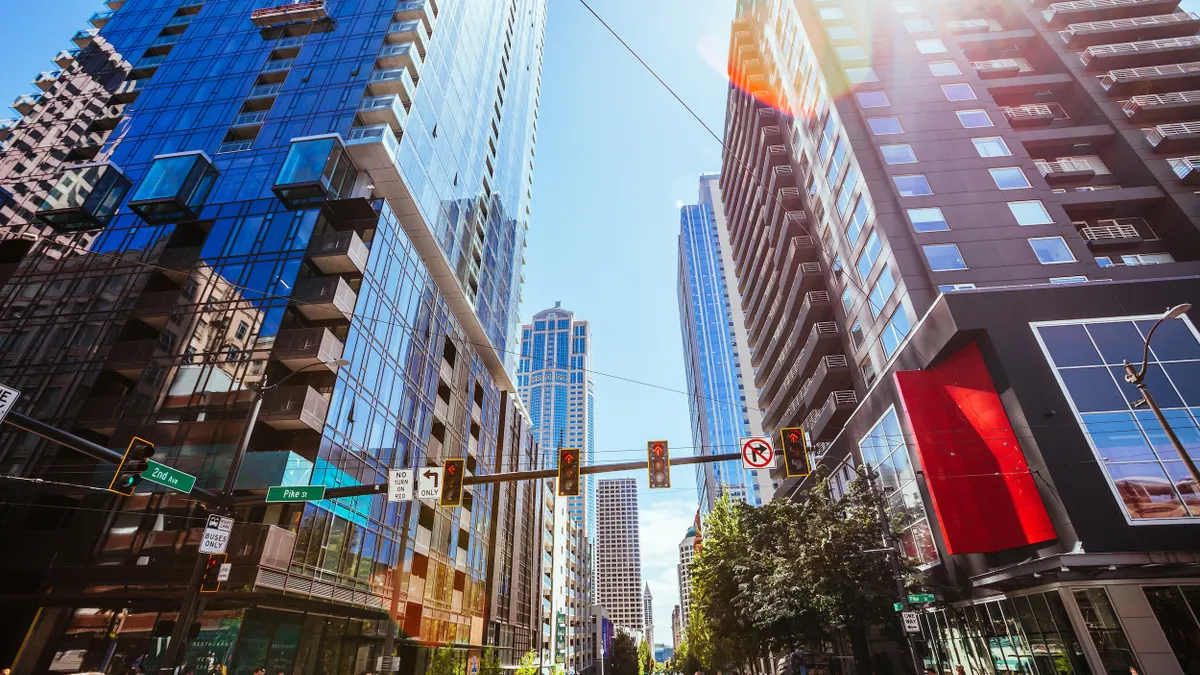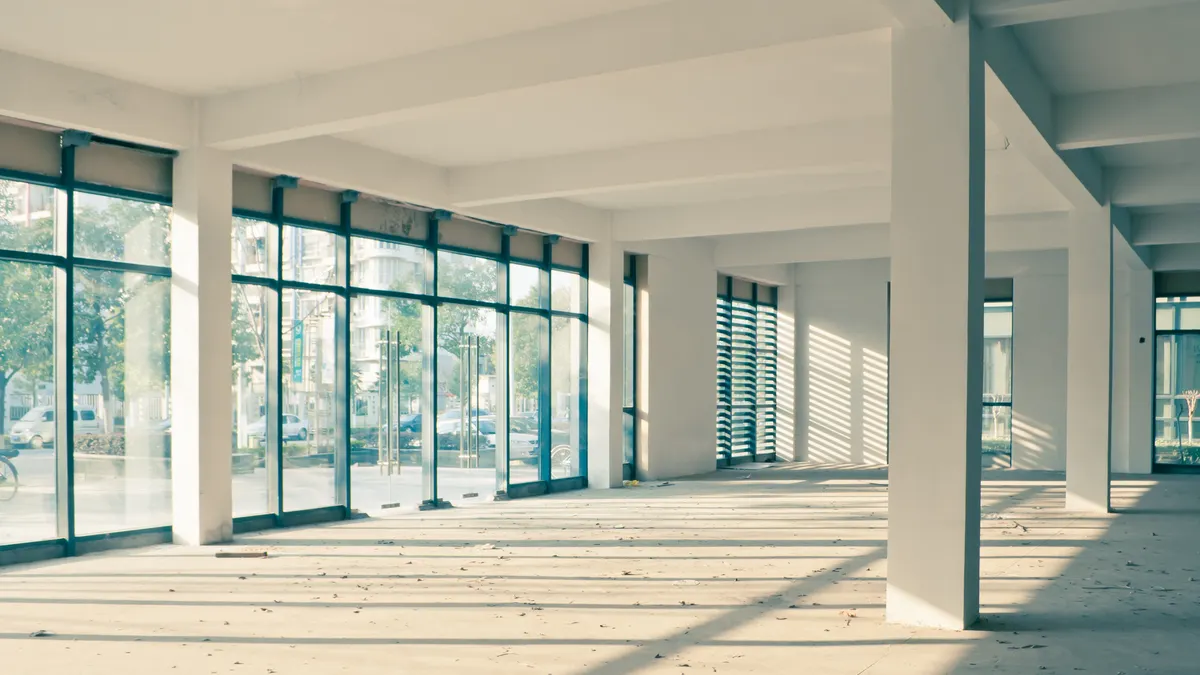In 2016, Rebecca Davies and her fellow Remark Glass co-founders needed space in Philadelphia to expand their growing glassblowing business. When they learned of an available basement space in the 340,000-square-foot Bok Building, a former technical high school in South Philadelphia, they decided to take a look — and a gamble.
The space was perfect for the team’s needs, but Remark Glass would be one of just 15 new tenants in the newly repurposed Bok, which was auctioned off by the city in 2013. The basement of an abandoned school building isn’t exactly a high-visibility location, and being first in a new venture brings its share of risk, Davies explained. Would it fly?
Today, the answer is a resounding yes. The adaptive reuse project houses 200 tenants, including restaurants, artisans, nonprofits and educators. Remark Glass has opened a shop there and expanded into more of the basement spaces. The businesses in the Bok Building employ more than 600 people, 75% of whom live within a mile-and-a-half radius of the site, said Lindsey Scannapieco, managing partner of Scout, the development and design firm behind Bok’s revamping.
Bok is a shining example of abandoned school adaptive reuse at its best, proponents say. But it’s not the only example: Communities in other areas of the U.S. have also revitalized such buildings, turning them into affordable housing, community centers and commercial spaces.
As populations shift, communities sometimes close schools, leaving abandoned buildings in the heart of town. During the 2021-2022 school year, 755 school buildings closed across the nation, according to the National Center for Education Statistics.
Often, old schools get demolished, said Erin Hanafin Berg, deputy director of Rethos, a Minnesota-based nonprofit that advocates for the reuse of old buildings nationwide. “It can be frustrating to reconcile the overt need for housing, for instance, and then throw usable buildings in the trash,” she said.
However, the adaptive reuse of schools can be costly, and when paid for with tax dollars, unpopular. “It’s a complex problem, with many challenges,” Berg said. “But schools also present flexibility in how they can be used.”
A new life
Another example of abandoned school redevelopment occurred in Keeseville, New York, a rural upstate community.
When the population began to shift in the village of Keeseville in the 1970s, Keeseville High School closed down, and students moved to a consolidated building in a nearby town. The high school, constructed in 1936, came under the purview of the Village of Keeseville, which converted the 55,000-square-foot building into village offices. But when the village dissolved in 2015, it vacated the property, said Tim Bresett, town supervisor for Ausable, New York, the town that took over part of Keeseville after the dissolution.
Shortly thereafter, former Keeseville village council members and Ausable town council members formed a nonprofit to advocate for repurposing the school. While it took the nonprofit more than a decade to gain approvals and funding, the old Keeseville High School is partially occupied and well on its way to becoming a local community hub, Bresett said.
Today the building is slated to be mixed-use. So far, it is home to an indoor mushroom grower, a local radio station and a pizza shop. The nonprofit is also renovating the school’s gym so the community can use it for basketball, pickleball and volleyball. “There’s high demand for the gym space,” said Bresett.
To get the building ready for occupancy, the nonprofit replaced its boiler, renovated the roof and entrance and refinished the gym floor, which had warped over time. “The building is solid and stands the test of time,” said Bresett. “It’s mostly just aesthetics we need to improve.”
That’s often the case with old schools, said Berg, especially when they are repurposed for housing.
“You’ve got masonry exteriors, good lighting and usually good filtration,” she said. “These buildings were designed to stand the test of time. A classroom or the combination of two classrooms can be ideal for conversion to an apartment.”
Longfellow Commons Community in Dayton, Ohio, is a good example. There, architects converted a historic school building into a residential community for those aged 55 and up, maintaining many of the building’s unique details, like the original tin ceiling.
Like Philadelphia’s Bok Building, most schools are also located in walkable city or town centers.
“We promote the location as a selling point,” Rethos’ Berg said. “They can be ideal spaces for civic uses, like big gatherings in an auditorium or gym, as well as art centers, libraries or space for city council meetings.”
Overcoming obstacles
A lack of funding and community pushback are some of the hurdles that face school-repurposing projects.
In the case of Keeseville High School, it took the town and nonprofit group a couple of tries to pin down funding.
“When we first wanted to convert the building, we tried with a bond, but the town voted it down,” Bresett explained. “That was too aggressive.”
Instead, they turned to grants and private donations to supply the approximately $4 million required to renovate the space.
For the Bok Building project, Scannapieco leveraged private financing from a local bank as well as tax credits for historic building rehabilitation and new businesses. The city of Philadelphia did not contribute any funding.
“Often the schools wind up in the hands of a city council, and they don’t know what to do with a large vacant building,” Berg said. “It helps to have a private entity or nonprofit that is eager to take on the building and convert it.”
These adaptive reuse projects also can face pushback from community members with an emotional attachment to the building or who are concerned about what it will be converted into.
“There are a lot of emotional and social challenges with reuse, but this is a reality of shifting populations,” said Scannapieco. Alumni from the school that was turned into the Bok building often have tables at events the space hosts throughout the year.
Scannapieco also noted concerns that redevelopment may spur gentrification, pricing out longtime residents. But she argues that the Bok project also benefits the neighborhood’s current residents. Many of the jobs in the building don’t require more than a high school degree and pay above Philadelphia’s living wage, she said. Plus, Bok hosts a weekly community breakfast and has a program that helps recent immigrants start businesses.
“If anything, we’ve given people a reason to stay here,” Scannapieco said. “It’s an investment in the health and wealth of the neighborhood.”


